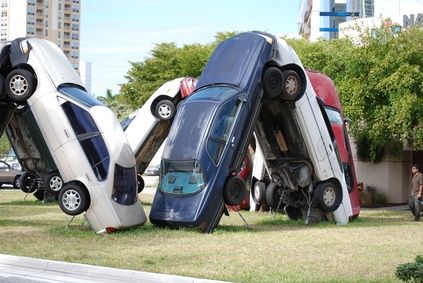Southern Laws
- Southerners have a reputation for crazy laws and traffic laws are no exceptions. In Sarasota, Florida, you will be fined $78 for hitting a pedestrian. In Dublin, Georgia, it is illegal to drive through a playground, and in Marietta, Georgia, it is illegal to spit from a moving car or bus but it is OK from trucks.
Western Laws

- In Cape Coral, Florida, you cannot park a pickup truck in front of a property you do not own and all over Florida if you tie an elephant or an alligator to a parking meter you have to feed the meter just as if you had parked a car there. In Tennessee it is illegal shoot any animal from a moving car--except whales. In Virginia Beach, Virginia, and everywhere in Texas, if you are caught for drunk driving everybody in the car who is drunk losses their license.
- The "Wild, Wild West" has its share of crazy traffic laws. In Glendale, Arizona, it is illegal to drive a car in reverse--so parking requires careful consideration. In California it is illegal for a car without a driver to exceed 60 mph. In Oregon, you can get a ticket if your car door is open "longer than is necessary."
The Rest of the Country
- You cannot drive a car in Redlands, California unless there is a man with a lantern walking in front of it. In Nevada, it is illegal to ride a camel on the highway. In Denver, Colorado, you can not drive black cars on Sunday and it is illegal to molest a car in Clinton, Oklahoma.
Foreign Laws
- The rest of the country has traffic laws that are just as weird. In Bloomfield, Connecticut, it is illegal to eat in your car. It is illegal to run out of gas in Youngstown Ohio. In Rhode Island you are required to give an "audible signal" when passing another vehicle, and it is against the law to pass a horse in Indiana.
Americans are not the only people with lunatic traffic laws. In Luxembourg, you must have windshield wipers on your car, but you are not required to have a windshield. In Montreal, you may not park a car in such a way that it blocks your own driveway. In Singapore, you are not supposed to come within 164 feet of a pedestrian crossing the street. You can't wash your car on Sunday in Switzerland, and women in Saudi Arabia still aren't allowed to drive cars.
Click the link to read the entire article from ehow.com: http://bit.ly/fBziFo








